“Learning the real bravery of her approach and this fearlessness in tackling all sorts of disciplines”: What to expect from the UK’s first retrospective of Natalia Goncharova at Tate Modern
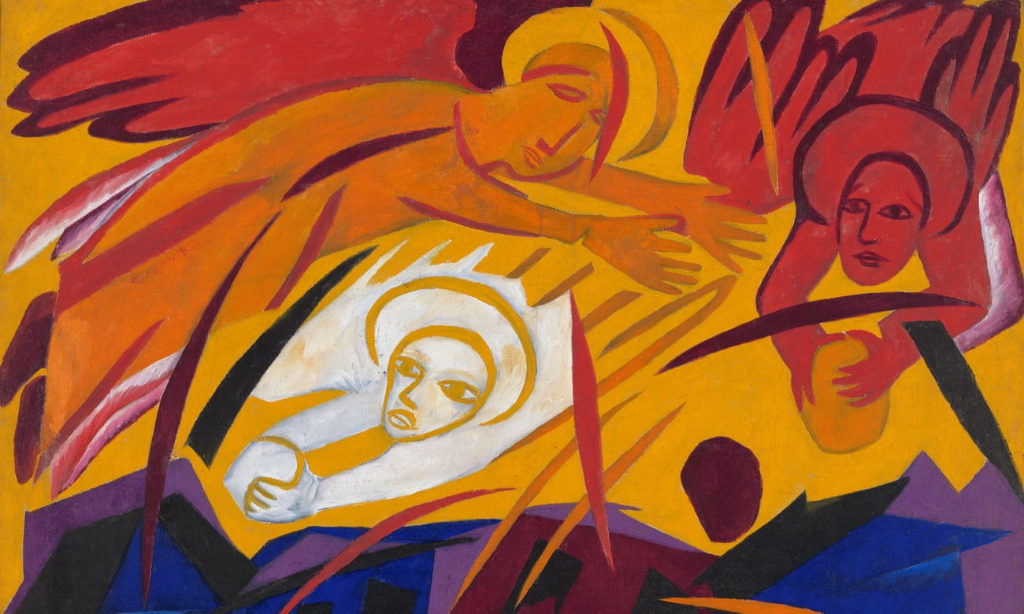
The Tate Modern exhibits this first ever large-scale retrospective of the Russian artist Natalia Goncharova, which features over 160 pieces on international loan. Visitors can expect to see work from the artist’s impressionist and modernist approach, her traditional cultural inspirations and her vibrant costume and set designs for the Ballet Russes.
We took time to speak to Tate Modern Assistant Curator, Katy Wan, in detail about what we can expect from this avant-garde artist and what we can learn from her groundbreaking experimental approach.
How do you think visitors should approach the exhibition?
We recognise that Goncharova is an artist who has been overlooked and is probably not that well known outside of art circles, so I think it’s absolutely fine for them to come with no expectations and just to come with an open mind.
What can we expect from this retrospective?
Goncharova was an artist who worked with lots of different disciplines and in the exhibition we represent, first off, the inspiration that she took from the folk culture of Tula province where she grew up and then we almost immediately look at how she was positioned within the context of modernist painting, alongside her peers Picasso and Derain. Goncharova beside these artists was collected by some of the most pre-eminent art collectors of the age of Moscow society.
Then we have a glimpse into her 1913 respective; the largest of any avant-garde artist. So already we see a diversity of style and her inspirations. In the rest of the exhibition, there are rooms that examine her approach to fashion design, to interior design and her work for the theatre.
For anyone who is familiar with the work of Goncharova, they probably associate her most with the Ballets Russes and Sergei Diaghilev who was the founder of that company. These extraordinary ballets she designed for include Le Coq d’Or, for which we are so fortunate to have brought over the costume “The Golden Cockerel” from the Los Angeles County Museum of Art, alongside stunning examples of costumes from collections right here in London from the Victoria and Albert museum. These include designs for the ballet Sadco, which was set underwater. So, even if you don’t know much about Goncharova, there are many points of interest for visiting audiences.
How did you curate the exhibition and does the order in which it is presented make a difference?
The exhibition is roughly chronological but we do look at themes in her work. For example, there is a room that looks at images of war. Goncharova created a print series called Mystical Images of War, bringing together apocalyptic scenes from the biblical Book of Revelations with a feeling of impending doom. There is something very timeless, but also very current about it, seen again in a piece called Angels and Aeroplanes pairing modern technology with classical themes.
One thing we have tried to do is identify these really persistent inspirations for her. Quite deliberately so, we created display cases between the first and third walls, to show the traditional festive costumes of Tula and give the sense of this thread running through her practice of this nostalgia for imperial Russia and in the last room of the exhibition we see these floral motifs designs, which are clearly reminiscent of this earlier work.
Goncharova seemed to dabble with various themes including the female nude, can you tell us a bit about that and the challenges that it brings?
I think it’s really interesting that you have highlighted the nudes. It’s quite a short-lived moment in her practice but I think this was Goncharova’s approach, she was very interested in problem-solving ideas. She would take a theme or an inspiration and then liked to put her own spin on things and once she resolved stylistic issues she would move on quite quickly. So, it has been a challenge how to unify this diversity of material but you can certainly see the distinctive Goncharova characteristics: flatness of perspective, attention to the plain and of course the very vivid colours throughout her career.
What do you think visitors will absorb and take away from their visit?
I think it is learning the real bravery of her approach and this fearlessness in tackling all sorts of disciplines. For someone so accomplished in painting it’s really fantastic that she took on the practice of theatrical design. Designing for stage, costumes that have to be moved around in. For example, in Sadco, resolving the problem of how you create the impression of the whole cast being under the water. She capitalised on different materials being available, fins moving in the water she resolved using lightweight material and for glistening scales she used reflective materials such as leather painted with metallic paints.
Interestingly Goncharova is often paired with her partner, Mikhail Larionov, who is also an artist. Together they wrote manifestos that claimed new theories and developments of art. Often there is a difficulty separating them, but hopefully this exhibition has created a distinction between the two of them too.
Ezelle Alblas
Featured image: Detail from Harvest: Angels Throwing Stones on the City, 1911,
by Natalia Goncharova © ADAGP, Paris and DACS, London 2019
Natalia Goncharova is at Tate Modern from 6th June until 8th September 2019. Read our review here.

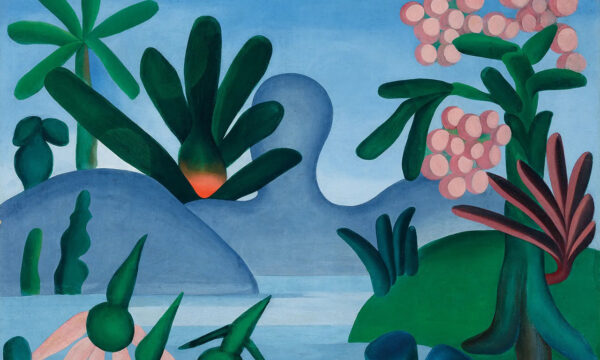
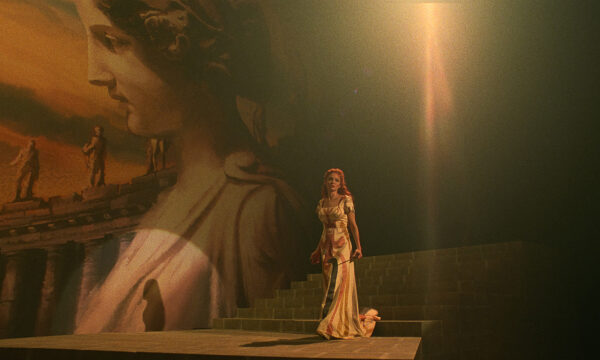
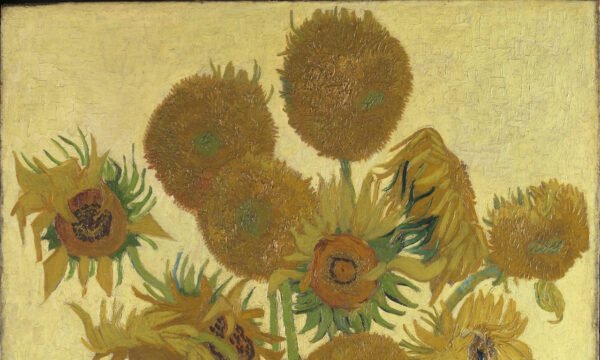
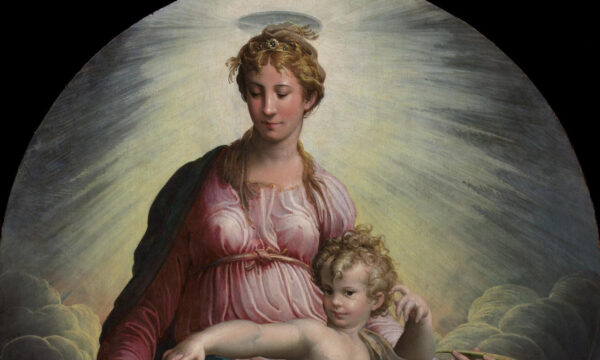
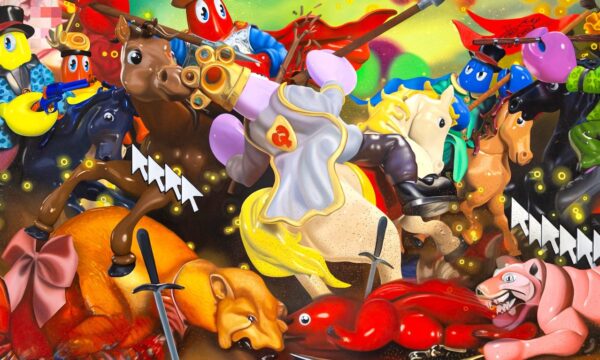
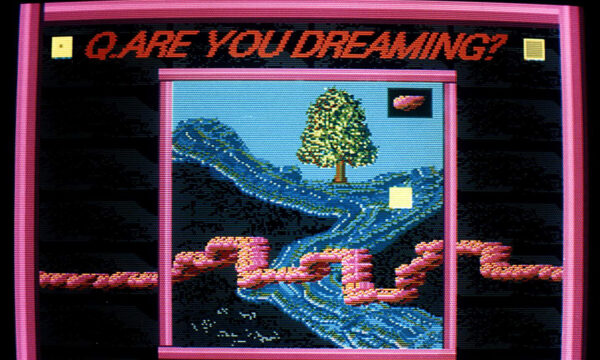
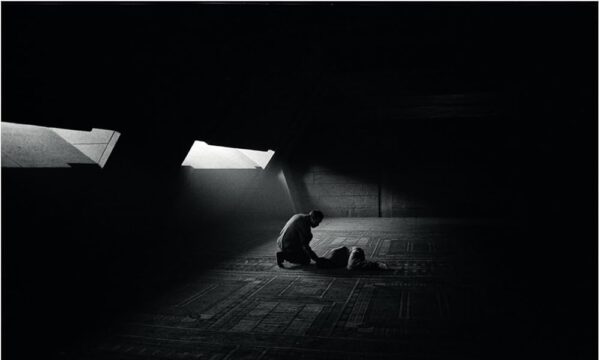
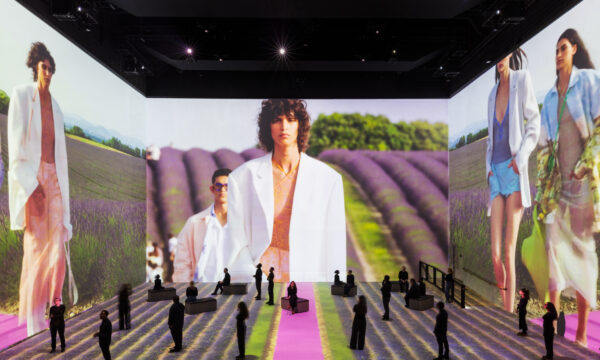
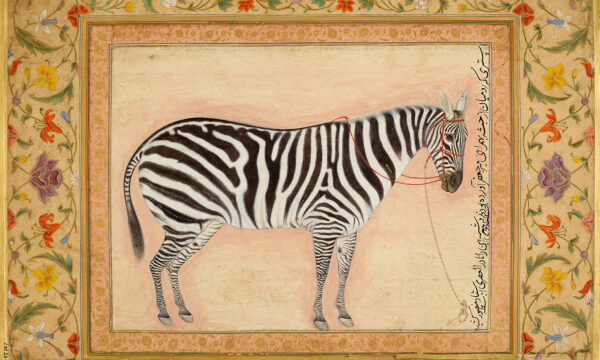









Facebook
Twitter
Instagram
YouTube
RSS